Córdoba, Veracruz 作者: 来源: 发布时间:2021-11-16
1. Population and Area
Pop: 218,153 (city)
Area: 226 km2 (munip.)
Elev: 860 masl

Córdoba location in Mexico within the state of Veracruz
https://goo.gl/maps/q3on7Xxd35omcN8DA
2. Natural geography
Nature and weather
Hydrography
It is watered by the Seco river, which is born in the Citlaltépetl, passes through Tomatlán, slopes towards the south and then north following its course east, until its confluence with the Atoyac river; the San Antonio river that rises near Chocamán, passes to the shore of the city and empties into the Seco river; and the Blanco river that has its origin in the Acultzingo peaks.
Flora and fauna
Its vegetation is of the type of low deciduous forest, high deciduous forest, and mountain mesophilic forest consisting mainly of trees that lose their leaves during winter such as saiba, jonote, guarumbo, tempesquistle and cedar. In the higher areas there is also mesophilic mountain forest or cloud forest, highlighting trees such as walnut, ash, sycamore, poplar, oak, pine, mahogany, oak and large tree ferns.
A fauna made up of populations of wild mammals developed such as: rabbits, squirrels, armadillos, raccoons, opossums, foxes, cacomixtles, gophers, badgers (called coatis in South America; scientific name Nasua), temazates, martens or martuchas, coaqueches (agoutis) , field rats; birds such as: huilota pigeon (Zenaida macroura), quails, thrushes, hawks, swallows, canoe beaks and green parakeets; and reptiles such as teteretes (Basiliscus vittatus), corals (Micruroides euryxanthus euryxanthus), mazacuatas (boas), tepochos, nauyacas (also called "levers" or "levercoatl", 'viper that rots the flesh' due to its necrotizing venom that destroys the tissues; its scientific name is Bothrops asper).
Köppen Classification: Tropical Monsoon Climate
Tropical monsoon climate, occasionally also known as a tropical wet climate or tropical monsoon and trade-wind littoral climate in climate classification, is a relatively rare type of climate. Tropical monsoon climates have monthly mean temperatures above 18°C (64°F) in every month of the year and feature wet and dry seasons, as Tropical savanna climates do. Unlike tropical savanna climates however, a tropical monsoon climate's driest month sees less than 60 mm (2.36 in) of precipitation. Also a tropical monsoon climate tends to see less variance in temperatures during the course of the year than a tropical savanna climate. This climate has a driest month which nearly always occurs at or soon after the "winter" solstice for that side of the equator.
The Köppen Climate Classification subtype for this climate is "Am". (Tropical Monsoon Climate).
The average temperature for the year in Córdoba is 72.5°F (22.5°C). The warmest month, on average, is May with an average temperature of 77.7°F (25.4°C). The coolest month on average is January, with an average temperature of 65.8°F (18.8°C).
The highest recorded temperature in Córdoba is 109.4°F (43°C), which was recorded in May. The lowest recorded temperature in Córdoba is 35.4°F (1.9°C), which was recorded in September.
The average amount of precipitation for the year in Córdoba is 93.1" (2364.7 mm). The month with the most precipitation on average is September with 18.6" (472.4 mm) of precipitation. The month with the least precipitation on average is January with an average of 1.7" (43.2 mm). In terms of liquid precipitation, there are an average of 153.8 days of rain, with the most rain occurring in July with 20.9 days of rain, and the least rain occurring in March with 6.0 days of rain.
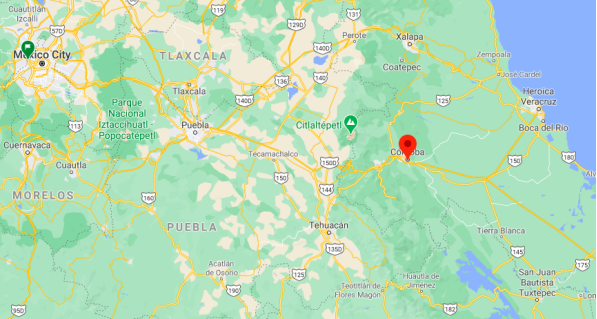
Getting there and around
Get there
By air – There is no airport in Córdoba. The closest Airport is the airport of Veracruz City, from where you can drive or take a bus to Córdoba.
By car – The distance between Mexico City and Xalapa is 232 km. The road distance is 293.7 km. It takes approximately 3h 29m to drive from Mexico City to Xalapa and costs $500 - $800, including tollbooths.
From Puebla: Estimated driving time - 1 hour 56 minutes
From Veracruz: Estimated driving time - 1 hour 09 minutes
From Xalapa: Estimated driving time - 2 hour 11 minutes
By bus – There are several bus companies that offer trips to Cordoba from major cities, such as Mexico City, Puebla, Veracruz or, Xalapa. Buses are normally inexpensive and some bus lines offer student discounts in either official Mexican holidays or the summer, winter and April vacation period. Seniors over 65 get half price. First class buses often offer movies and can be very comfortable.
https://wikitravel.org/en/C%C3%B3rdoba_(Mexico)
Car Rental – To explore Mexico’s provincial towns and cities—including its beach locations and the scenery and attractions near them— consider renting a car for your visit. Having your own car will give you more flexibility than using public transport options and, in some cases, offer you access to places which are otherwise difficult to visit without the use of a car.
COVID19 – International entry into Mexico from United States
Allowed for: All visitors arriving by air. Mexico land borders are closed to non-essential travel
Restricted for: There are no current restrictions.
Get around
Local Buses – Local buses and mini-buses (combis or micros) are available locally for a fraction of the cost of a taxi around town. You need to speak Spanish to be able to ask for directions or ask the driver to tell you where to get off.
Taxis – Taxis in most of Mexico’s towns and cities are not metered, so agree your price before you get in. Taxi travel is very affordable in Mexico, in comparison to the USA, Canada and Europe, and so provides a viable means of public transportation in Mexico. Your hotel can arrange taxis for you; some post their rates on a board in the lobby; taxi hotel rates are usually higher than cabs you hail off the street. If you speak Spanish, you will have a distinct advantage and be able to negotiate a price with the driver.
Uber is expanding rapidly across Mexico and now offers services in cities across the country, including: Mexico City, Toluca, Cuernavaca, Puebla, Querétaro, León, Aguascalientes, San Luis Potosí, Guadalajara, Monterrey, Hermosillo, Tijuana, Mexicali, and Mérida. Uber has been adding Mexican cities to its network every year, check for availability when you arrive at your destination in Mexico.
Cabify and Didi are also developing and currently operate in cities including Mexico City, Toluca, Monterrey, Puebla, Querétaro and Tijuana. Check for availability in the city you are visiting.
These services offer people with smartphones a way to book a cab through a mobile app for a pre-agreed price. Fares are comparable with Sitio type cabs, and sometimes trade at a premium to this when local demand increases.
https://www.mexperience.com/transport/taxi-travel-in-mexico/#51
3. ECONOMY
GDP: 32,050 M MXN (2010)
https://imco.org.mx/ciudades2010/ciudades/52_Cordoba.html
4. Industry characteristics
Córdoba is strategically built between the port of Veracruz and the country's capital, and its area of influence ranges from Huatusco to Tuxtepec and Tierra Blanca, where around 1 million inhabitants converge, which has turned the city into the commercial regional nucleus .
Agroindustrial activity includes poultry and sugarcane, coffee, anthurium, heliconia, banana, mango, beans, corn and the dining palm. The coffee industry is one of the most important in the country. It has oil and chocolate producing industries.
It has national and international headquarters companies and it should be noted that there are also plastics, bottling and metallurgical industries. In the Potrero Nuevo area there are logging companies and mills.
In the Mercado Revolución built in the 1950s (the oldest market in the entire state) where meat, chicken, fish, fruits, vegetables are traded.
Among the most important economic activities in the city and its surroundings, is the harvest and production of coffee.
Key project: Biodiesel Program, The Energy of the People
President Andrés Manuel López Obrador and the business sector presented a first package of 147 projects that are part of the National Infrastructure Plan.
Among these projects, the construction of the "Córdoba-Orizaba-Mendoza Peripheral Bypass" is contemplated for the central zone of Veracruz with an investment of 5 thousand 568 million pesos with a starting term of 2023-2024.
The initial project of the work, in 2014, included the municipalities of Atoyac, Atzacan, Mariano Escobedo and Ixhuatlancillo, but the new plan - redesigned by the Ministry of Communications and Transportation of the previous federal government - indicates that the new route will cover Mendoza, Nogales, Río Blanco, Orizaba, Rafael Delgado, Ixtaczoquitlán, Fortín de las Flores, Naranjal, Córdoba and Amatlán de los Reyes.
The current highway, which runs from Orizaba to Córdoba, will be toll-free and as a boulevard that will link the two metropolitan areas, favoring flow in the areas of Fortín, Córdoba and Orizaba, and with the consequent benefit for the Sierras del Volcán and Zongolica, he assured.
If the project drawn up before the start of this six-year term is preserved, this new highway will be built with state-of-the-art technology and includes four interchanges located in: Cecilio Terán, Jalapilla, Córdoba and Amatlán de los Reyes. It is a four-lane construction with tunnels.
The resources come from the government and private initiative.
http://www.veracruzenlanoticia.com/2014/12/cambian-ruta-al-periferico-metropolitano
https://www.pressreader.com/mexico/el-mundo-de-orizaba/20191201/281496458145323
5. Attractions
Museum of Anthropology and History
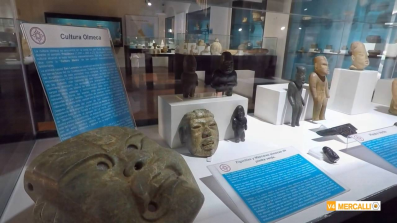
You shouldn’t miss the Museum of Córdoba, with rooms dedicated to archeology and history and also temporary exhibitions.
It has samples of Olmec, Mayan, Huasteca, Teotihuacan and Totonaca cultures, as well as graphic representations of Córdoba’s historical events, such the May 21 battle and the signing of the Tratados de Córdoba, in 1821, between Iturbide and Juan O 'Donojú, which culminated the Mexican dependence to Spain.
You’ll find vessels, cannons, axes and spears among much more weaponry, as well as some Mesoamerican cultures original figurines and other replicas.
If you go as a family, in the Elena Poniatowska play center children can spend pleasant hours accompanied by storytelling, recreational activities or workshops specially designed for them, while you and the older tour the museum
A relatively new enclosure is the Museo Nacional de la Caña La Zafra (National Museum of Caña La Zafra), where you can learn about the history, clothing and machines that intervene in the making process of sugar, panela, piloncillo and cane derived biofuels.
It’s inside the Exhacienda de San Francisco Toxpan, about which we will talk to you later. We just tell you in advance that visiting it is essential.
For 45 minutes, you can visit the place along with an expert, who will share relevant data about this crop that, together with coffee, give identity to the region.
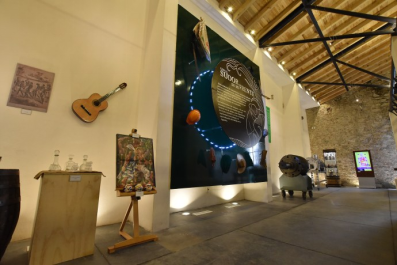
Without fear of being wrong, we bet the Museo del Cafe will become one of your favorites. It has two rooms where coffee working tools are exhibited: they go from quite sophisticated ones to others with great historical value as having been produced during the Industrial Revolution.
In addition to the previous, you’ll find a photographic and lithographic collection that tells a good part of regional’s coffee history. Furthermore, you’ll find a multisensory room, where baristas will give you valuable tips for taking your taste for coffee to the next level.
Haciendas
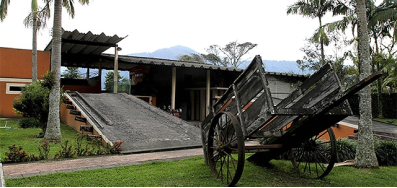
The Exhacienda de Guadalupe is a more than three centuries of history active monument. Its transformation throughout these 300 years has been truly substantial, as from being a slaves trafic place becoming a harvest area.
Currently you can visit it to learn about the Arabico coffee production processes. The guided tours include a little history, visits to coffee plantations, experts talks and tasting at the end. If your interest goes further, you can ask about their specialized workshops designed for those experimented consumers.
With regard to the Museo de la Caña that we told you before, it is in a fascinating area—the Exhacienda de Toxpan, whose charm, we’re convinced, will catch you no sooner you set foot inside.
Built in the 17th century with dry river stones, it currently preserves its old sugar mill ruins—one of the country’s first—combined with the restored areas.
Adventure and Nature
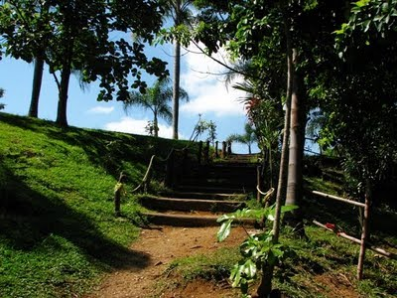
Along four hectares of green areas, El Parque Ecológico Paso Coyol is Cordoba's urban lung, a refuge where both inhabitants and visitors come to enjoy a weekend without leaving the city center.
If you suddenly get tired of walking through the cobbled streets or the marimbas sound playing in your head time and time again, we recommend you taking a break and going to this place to enjoy nature, sun and even a picnic.
But if you have decided to go a little further, a good option would be going to Coscomatepec, 45 minutes (29 km) from Córdoba center. In its important scenic route you can practice climbing at any level, it doesn’t matter if you’re starting or professional.
If you have reached Barranca del Río, you’ll find options such as hiking, horseback riding, mountain bike tours, zip-lining, rappelling and climbing, as well as internment in caves and grottos through which water currents travel before becoming waterfalls.
https://www.visitmexico.com/en/veracruz/cordoba
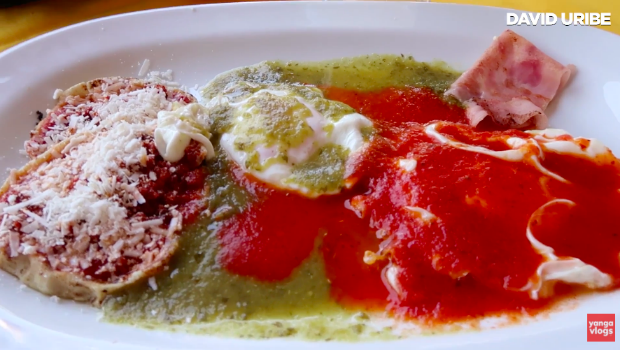
Some of the best places to go out in Córdoba
https://youtu.be/piKHY_owjyw
6. History
The history of Córdoba can be guided through three major events: its founding, the Battle of May 21 and the signing of the Treaties of Córdoba.
The foundation of Córdoba took place in the year 1618 due to the attacks and assaults that the maroon blacks carried out on the royal road in Veracruz-Orizaba-Mexico, they forced the Spanish to found a population near the site of the slaves in order to protect to the faithful subjects and to the royal interests. Another factor that favored its foundation was its geographical location and the favorable climate for agricultural practice. Thus, during the 18th century and when the Bourbon reforms changed the territorial divisions, known as provinces, to intendencies, Córdoba was a head town of the homonymous subdelegation, belonging to the Veracruz intendancy. It is interesting to note that the town of Córdoba was close to where the attacks by black maroons took place, that is, near the town of San Lorenzo (which we now know as Yanga).
Four neighbors from Santiago Huatusco (that is, what would now correspond to the vicinity of San Juan de la Punta -Cuitláhuac, at present- and Cotaxtla -not to be confused with San Antonio Huatusco-, which corresponds to the municipality that we currently know): 8 Don Juan Cristóbal de Miranda, Don García de Arévalo, Don Andrés Núñez de Illescas and Don Diego Rodríguez, asked the Marquis of Guadalcázar, Diego Fernández de Córdoba, Viceroy of the Colony and to whom the city owes its name, the foundation of Córdoba , authorized by the King of Spain Felipe III, on November 29, 1617. The settlement of the population was carried out in the Lomas de Huilango by 30 heads of families, hence the historical name of "City of the Thirty Caballeros."
From the 16th century onwards, the founding of the town of Córdoba is attributed to Thirty Knights –men of Spanish origin; by Royal Decree, the title of town is also granted; so it implied that the majority of the population would be of Spanish origin. The other settlements, such as: San Juan de la Punta, Amatlán, San Lorenzo, and others that were outside the town of Córdoba, would correspond to indigenous peoples.
Its development as a commercial area was creating certain importance: both the geographical location and its proximity to the port of Veracruz as well as the constant exchanges with the surroundings were creating it. During the Porfiriato, and as a consequence of the boom in the coffee trade at the end of the 19th century, Córdoba acquired greater economic importance and this was reflected in the passage of the first railroad of the Republic that linked directly to the port of Veracruz with Mexico City . Before this event, his active participation in various wars and internal struggles, including that of Independence, gave him an enhancement that led to his participation in the signing of the Treaties of Córdoba, in the American War of Intervention, the Revolution. The Battle of Córdoba (1821), which, it is reiterated, was the last battle for Independence and gestated on May 21 of the aforementioned year, each year, on that same date, is currently celebrated as a local holiday.
During the War of Independence in 1821; the people of Cordoba made resistance to the royalist forces of Colonel Francisco Hevia, in defense of the Plan of Iguala and the Trigarante Army. On August 24, 1821, Agustín de Iturbide, Chief of the Trigarante Army, and Juan O'Donojú, the last viceroy of New Spain, met in the Cordoba town to sign the Treaties of Córdoba, by means of which the War of Independence. For this reason it is called Córdoba, Cradle of Freedom of Mexico.
By decree of November 29, 1830, it was granted the political category of City; by decree of 1880 the title of Heroic is granted to him due to the defense before the Spanish royalist forces.
It was the capital of the State between 1916 and 1920, in the time of the governors Miguel Aguilar, Adalberto Palacios and Cándido Aguilar.
When the municipality of Fortín was created in 1930, Córdoba contributed to the Monte Blanco, Zapoapita and Tlacotengo congregations.
7. Other Information: Introduction of coffee to America
Until the early 17th century, coffee was an imported item in the New World. In 1715, coffee cultivation began in Haiti and Puerto Domingo. From this date on, the cultivation of coffee extends to countries whose climate is favorable. In Brazil the cultivation began in 1732, in Cuba in 1745, in Venezuela in 1735 and in Mexico in 1775.
Córdoba, a beautiful province of Veracruz, is recognized by chroniclers as the place where the first coffee plantation was made in the region. José Antonio Gómez de Guevara is the one who has the merit of having brought the first coffee beans to Mexico, and the first plantations were made in the Hacienda de Guadalupe.
In 1808, the priest José Santiago Contreras and the Parish priest Andrés Domínguez sowed in Coatepec and Teocelo in the state of Veracruz some seeds brought from Cuba by another Spaniard, Don José Arias. In 1809 the first plantation was made in the city of Xalapa, Veracruz; the same year, Mr. Jaime Salvet began to grow coffee in Cuernavaca and Yautepec, in the state of Morelos. Today, the well-kept plantations produce quality grain, recognized internationally.
Very soon, the export of coffee from Córdoba to Spain began. In 1802, 272 quintals left through the Port of Veracruz (quintal is an old Castilian measure equivalent to 57.5 kg.), 493 quintals in 1804, in 1825 exports dropped to 33 quintals, and in 1826 to 20. No there are reliable data for the other years. At present, Mexican coffee is in a good place in the international market, after more than a century of tradition and experience in its cultivation.
Among the most important economic activities in the city of Córdoba and its surroundings, is the harvest and production of coffee.
8.Contact Information

City Mayor: Leticia López Landero
Contact number: +52 (271) 717 1700, ext. 1719
Govt. Office Address: Palacio Municipal, calle Enriquez s/n, Col. Centro
FB: https://www.facebook.com/LetyLopezCordoba
Website: https://cordoba.gob.mx
E-mail: presidencia@cordoba.gob.mx
